What Are the Different Types Of Fishing Lures? (Explained For Beginners)
UPDATED 03 NOVEMBER 2023
by Robert Ceran
Are you confused by the multitude of different fishing lures used by anglers?
In that case, you’re not alone. Even experienced anglers struggle to keep track of all the different fishing lures available on the market, especially since new ones come out all the time.
But luckily, the majority of fishing lures fall into a handful of main categories, and with a basic understanding of these fishing lure types, choosing the right lures becomes much easier.
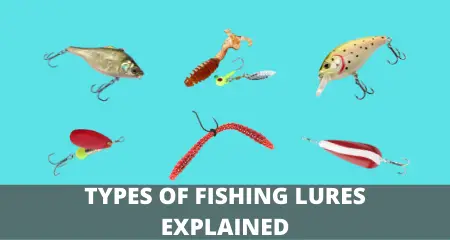
In this article we’ll cover the main types of fishing lures, and will also cover what species and applications they are generally used for, to help you decide which ones are best for your purposes.
Fishing lure types chart
| Fishing lure type | Image | Fishing application | Recommended species |
|---|---|---|---|
| Crankbait/plug |  | Casting, trolling | Bass, Walleye, Trout, Salmon, Steelhead, Northern Pike, Muskie |
| Jig |  | Casting, vertical fishing, ice fishing | Bass, Walleye, Trout, Crappie, Yellow Perch, Panfish |
| Inline spinner |  | Casting, trolling | Trout, Bass, Walleye, Northern Pike, Muskie |
| Spoon | Casting, trolling, ice fishing | Walleye, Northern Pike, Muskie, Salmon, Steelhead | |
| Topwater popper |  | Casting | Bass, Trout, Northern Pike |
| Swimbait |  | Casting, trolling, vertical fishing, ice fishing | Bass, Walleye, Trout, Salmon, Steelhead, Northern Pike, Muskie |
| Soft plastic bait |  | Casting, finesse tactics, ultra light fishing | Bass, Trout, Crappie, Yellow Perch, Panfish |
| Blade bait |  | Casting, vertical fishing, ice fishing | Walleye, Northern Pike, Muskie, Crappie, Yellow Perch |
| Spinnerbait |  | Casting, trolling | Bass, Northern Pike, Muskie |
| Chatterbait |  | Casting, trolling | Bass, Northern Pike, Muskie |
| Fly |  | Fly fishing, casting, finesse tactics, ultra light fishing | Trout, Bass, Salmon, Steelhead |
The table above shows the main types of fishing lures, and also lists the fish species and applications for which they are most commonly used.
What are the main types of fishing lures?
The 11 main types of fishing lures are:
- Crankbaits
- Jigs
- Topwater lures
- Swimbaits
- Inline spinners
- Spoons
- Soft plastic baits
- Blade baits
- Spinnerbaits
- Chatterbaits
- Flies
Keep in mind that while the list above covers the main types of lures for fishing, most of these lure categories can be further subdivided into subtypes.
And to make matters even more complicated, there is an increasing number of hybrid lures that combine two or more different fishing lure types into one.
But with that being said, if you have a good grasp of the main categories of fishing lures, and know when and how to use them, you don’t need to worry about hybrid lure types and other lure variations.
Now let’s dive into the details and take a closer look at each of these lure types:
Crankbaits
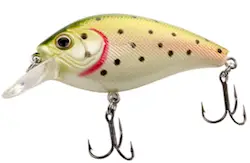
Crankbaits (also called plugs) are the most popular type of fishing lure, and can be used to catch a wide variety of fish, ranging from trout to muskie.
They are usually made of hard plastic or balsa wood, and come with a bill at the front which gives them a wiggling action during retrieval.
Based on size and angle of the bill, the bill can also help these lures to dive deep into the water.
Jigs
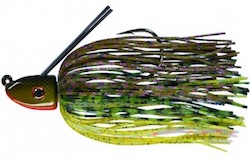
Jigs are the most versatile fishing lure type, as they can be combined with an infinite variety of skirts or soft plastic baits. Skirted bass jigs usually come with a weed guard that makes them semi weedless lures, which is ideal for fishing close to heavy cover.
Most other jigs consist of a weighted jig head that can be combined with a variety of soft plastics, such as grub tails and creature baits. Jigs are ideal lures for vertical fishing, including ice fishing.
Inline spinners
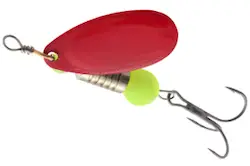
The inline spinner was originally designed for trout fishing, and it continues to be one of the most deadly trout lures. In addition to trout, inline spinners are also great lures for catching bass, pike, and muskie.
Spoons

Spoons are among the oldest types of fishing lures, and consist of a bent piece of metal that wobbles during retrieval, and sends out flashes of reflected light in all directions.
Spoons are great lures for trolling, and for targeting larger fish species, including salmon, pike, and muskie.
Topwater lures
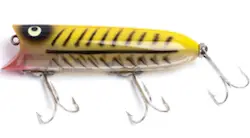
Topwater lures are very popular for bass fishing in summer, since this is the season when bass feed actively at the surface.
Topwater lures come in a wide variety of sizes and shapes, with the most common ones being poppers and frogs.
What these lures all have in common is that they float, and are fish across the surface of the water in order to trigger strikes from bass, trout, or pike.
Swimbaits
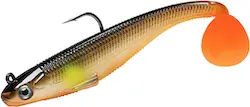
Swimbaits come with a body designed to give these lures a characteristic action when pulled through the water, with the most common ones being paddle tail swimbaits that wiggle their tail during retrieval.
In addition to this, there are also hard body swimbaits that are usually extra large, and are great lures for catching trophy size bass, pike, and muskie.
For more details on this, check out our article on the different types of swimbaits.
Soft plastic baits
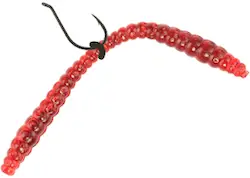
Soft plastic baits come in a huge variety of sizes, shapes, and colors, and can be fished as a trailer with a jig head, or with one of several rigs designed for finesse fishing.
These include the drop shot rig, carolina rig, wacky rig, texas rig, and ned rig. Soft plastic baits can even be fished with a bobber rig, and are great lures for catching bass, trout, crappie and panfish.
If you’re interested in finesse lures, check out our article on what types of fishing lures are best for spinning rods?
Blade baits
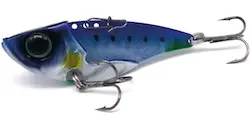
Blade baits were originally designed for vertical fishing, which explains why the eye for attaching the line is positioned on their back.
And while they are still among the best ice fishing lures for walleye and pike, blade baits have also gained popularity among bass anglers who use these lures in the open water season.
Spinnerbaits
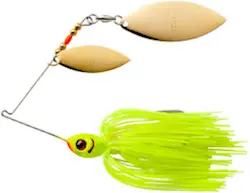
Spinnerbaits have been around for many decades, but continue to catch big bass to this day.
Due to their design, these lures are great for fishing for big fish in deep water, though they can also be used in many other settings. Spinnerbaits are also great lures for pike and muskie trolling.
Chatterbaits
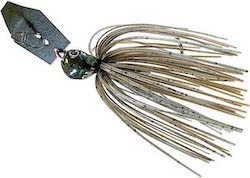
Chatterbaits are a more recent addition to the arsenal of bass fishing lures, and basically consist of the body of a skirted jig combined with a metal plate at the front.
During retrieval, the metal plate vibrates and wiggles, making it a highly effective lure for triggering bites from bass.
Flies
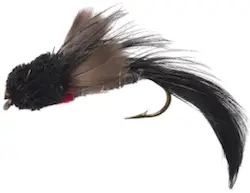
Flies were originally designed for trout and salmon fishing in streams and rivers, but have since been adapted to many other species and fishing applications.
And while a fly rod and reel setup was previously needed to fish a fly, many fly lures nowadays can be fished with an ultra light spinning rod setup, and are great lures for catching trout, bass, steelhead, and salmon.
How do you choose a fishing lure?
In order to choose a fishing lure, you have to consider the following 3 factors:
- What species are you targeting?
- Where in the water column do they feed?
- What are they feeding on?
For example, if you want to target walleye, you’ll need to use a fishing lure that can be fished close to the bottom, which is where walleye are found most of the time.
Because of this, jigs are one of the best lure types for targeting walleye, since they are designed to be hopped along the bottom.
To take another example, if you’re trying to catch bass in a pond during summer, you can be fairly certain that they’ll be feeding on small fish, amphibians, and other critters close to the water surface.
So in this case, topwater baits would be an ideal lure type to choose.
What is the easiest lure to fish?
The easiest lures to fish are crankbaits and inline spinners because they generate their own action in the water when you retrieve the lure.
Because of this, you just need to cast these lures out and retrieve them in order to trigger bites from fish.
What are the best types of fishing lures for bass?
The best types of fishing lures for bass are:
- Crankbaits
- Jigs
- Soft plastic baits
- Topwater lures
- Swimbaits
- Spinnerbaits
Out of these lure types, the one that is best for bass fishing on any particular day depends on the season, where the bass are, and what they are feeding on.
For example, when bass chase schools of shad in fall, among the best lures to target them are with swimbaits that resemble shad, by fishing these lures at the edge of the zones where shad schools congregate.
If you’re wondering what the best lure brands are, check out our article: what are the main fishing lure brands?
What are the main types of saltwater lures?
The main types of saltwater lures are crankbaits, spoons, and swimbaits.
All of these lure types have in common that they come in sizes that are large enough to perform well in saltwater, while smaller finesse lures are rarely used for saltwater fishing.
Types of ice fishing lures
The main types of ice fishing lures include jigs, jigging spoons, blade baits, and jigging swimbaits.
There can be no doubt that the most versatile and popular type of ice fishing lure is the jig, which can be combined with natural baits, such as maggots or minnow heads.
Jigging spoons and jigging swimbaits are variants of these lure types that are specifically designed for vertical fishing.
What are the different types of topwater lures?
Topwater lure types include:
- Poppers and chuggers
- Hollow body frogs
- Floating stickbaits
- Buzzbaits
In addition to these topwater lures, rat, mouse, toad, and duck imitations are also used for topwater fishing, and even spider imitations have been successfully added to the arsenal of topwater lures.
Types of crankbaits
Crankbaits are among the most versatile fishing lure types, and come in a huge range of sizes, shapes, and colors.
The most important difference that you need to pay attention to when choosing a crankbait type is the size, shape, and angle of their bill, which determines their diving behavior in the water (more on that in the next section).
Jerkbaits and stick baits are similar to crankbaits, but are longer and more slender, and come with a smaller bill designed for shallow diving.
Crankbait bill types
There are 3 main types of crankbait bills:
- Regular bill
- Square bill
- Deep diving bill
A regular crankbait bill is round and of moderate size, and will result in the crankbait diving a few feet down into the water during retrieval.
A square bill, on the other hand, is smaller and designed to dive more shallow, while a deep diving crankbait bill is larger and positioned at a very shallow angle, which causes the crankbait to dive deeper into the water when you retrieve it.
What are the different types of jigging lures?
The main types of jigging lures are:
- Jig heads
- Tube jigs
- Hair jigs
- Skirted bass jigs
- Bucktail jigs
- Micro jigs
Jig heads are usually baited with soft plastics, or with natural baits, such as minnows, maggots, or wax worms. Combining a jig head with natural bait is one of the best strategies for ice fishing success.
In addition to the jig types listed above, you can also use jigging spoons and jigging swimbaits for jigging.
Jigging spoons are small metal spoons designed for vertical fishing, and are great lures for walleye, yellow perch, northern pike, lake trout and trout.
Jigging swimbaits (such as the famous Rapala Jigging Rap), are small swimbaits designed to be fished vertically, and come with a horizontal blade in the tail region that causes these lures to dart erratically sideways when jigged up and down.
What are the different types of soft plastic lures?
The main types of soft plastic lures are:
- Plastic worms
- Creature baits
- Tubes
- Toads
- Soft jerkbaits
- Crawfish
- Grub tails
- Shad tails
- Soft stickbaits
Keep in mind that there is a huge variety of soft plastic lures, and if you just consider plastic worms as a category, you’ll find dozens upon dozens of different shapes and sizes to choose from.
If you add to this the different strategies available to fish soft plastic lures by using a variety of fishing rigs, then you’ll appreciate that fishing with soft plastics is an art and science that takes years to master.
Types of swimbaits
The 3 main types of swimbaits are hard bodied swimbaits, soft bodied swimbaits, and glide baits.
Soft bodied swimbaits can be further subdivided into paddle tails and straight tails, while hard bodied swimbaits come as multi-jointed variants or glide baits.
Glide baits are a specific type of swimbait that have a single joint in the middle of the body.
What lures do you use for trolling?
The best lure types for trolling are spoons, crankbaits, inline spinners, and swimbaits.
All of these lures have in common that they are designed to create their own action during retrieval, which is ideal for trolling, since you just have to pull them through the water behind a boat in order to trigger bites.
